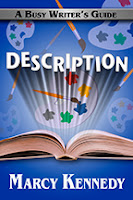Part of the Indie Author Series
A key tool that we have as indie authors for keeping in touch with our readers is our newsletter or mailing list. Building and maintaining a mailing list is considered foundational to a strong author business for good reason.
Unlike social media sites—or even our website—email is a direct means of communication. We’re not hoping they come to our site or hoping that our status update shows up in their social media feed. We’re also in control of our list so that, if a particular social media sites dies a dramatic death, our list doesn’t go with it.
But mailing lists still require maintenance. Over the past couple of weeks, I’ve been doing my regular “clean up” on my mailing list, which made me think this might be a good time to write about it as well.
Why Regularly Cleaning Our Mailing List Is a Good Idea
If you’re new to writing or haven’t had a mailing list long, you might not know what I mean by “cleaning up” my mailing list. Basically, I remove people from my list who’ve never opened an email from me after they’ve received at least five emails.
(Five is my own arbitrary number. You could make your threshold more or less, but I’d suggest not going lower than three sent emails. Life happens after all.)
Newsletter services charge based on how many subscribers we have. To keep costs down, we only want people on our list who are actually reading our newsletters and want to keep receiving them.
How to Clean Up Our Mailing List
We want to remove people who don’t read our emails, but we also don’t want to accidentally remove someone who wants to stay. For whatever reason, there’s a small margin of error where someone might be opening our emails and yet our newsletter service says they aren’t.
Because of this, we don’t want to simply delete the people our newsletter service marks as having never opened an email.
I like to send out one final email first. Programs like MailChimp or MailerLite make it easy to see which subscribers haven’t opened an email and send a message exclusively to those people.
Here are the steps I take for that final email:
Write a subject line that makes it clear that this email is different. I like to use Do You Still Want to Receive Emails from Me? That makes it clear what the email is about and that some action will probably be necessary.
Provide an easy way for them to let you know if they want to stay. In the email I send, I ask them to simply hit reply if they want to stay on my list. They don’t even have to write anything in their response if they don’t want to. I go with that for two reasons. The first is that it’s really easy for them. Some people still do write me a long response, but most send a blank response. The second is that, by replying, they bypass whatever glitch causes newsletter systems to think they weren’t opening the emails if they were. What this means (in MailerLite anyway) is that everyone who replies is removed from the “never opened” segment. I don’t have to manually protect them when I go to delete the real non-openers. It saves me a lot of time.
Give a deadline and tell them what to do if they’re reading it after that deadline has passed. I like to give people a week in which to respond before I remove them from the list. The average person checks their email at least once a week, so that’s a safe timeframe. However, I also tell people what to do if they’ve missed the deadline and wanted to stay.
The last time I did this, I had around 6 percent of people respond that they wanted to stay, and I cleaned out a few hundred inactive subscribers.
Do you regularly clean up your mailing list? Any tips you’d like to add?
 Marcy Kennedy is a mystery and speculative fiction writer who believes fantasy is more real than you think. Alongside her own writing, Marcy works as a freelance fiction editor and teaches classes on craft and social media. She’s also the author of the Busy Writer’s Guides series of books. You can find her blogging about writing and about the place where real life meets science fiction, fantasy, and myth at marcykennedy.com.
Marcy Kennedy is a mystery and speculative fiction writer who believes fantasy is more real than you think. Alongside her own writing, Marcy works as a freelance fiction editor and teaches classes on craft and social media. She’s also the author of the Busy Writer’s Guides series of books. You can find her blogging about writing and about the place where real life meets science fiction, fantasy, and myth at marcykennedy.com. Blog | Facebook | Twitter | Amazon | Apple iBooks | Barnes & Noble
About Description
 Description in fiction shouldn’t be boring for the reader or for the writer.
Description in fiction shouldn’t be boring for the reader or for the writer. Description: A Busy Writer’s Guide will help you take your writing to the next level by exchanging ho-hum description for description that’s compelling and will bring your story to life, regardless of the genre you write.
In Description: A Busy Writer’s Guide, you will
- find the answer to the age-old question of how much description is too much;
- learn how to use point of view to keep description fresh;
- recognize the red flags for boring description in fiction;
- explore how to use all five senses to bring your descriptions to life for the reader;
- discover the ways metaphors and similes can add power to your descriptive writing;
- gain the tools needed to describe setting, characters, and action in engaging ways;
- learn how descriptions can add conflict, enhance the theme, and amp up emotion; and
- much more.


Hi Marcy! My email program doesn't open images, I click a button that lets me show images when I want to see them. However this messes with newsletters, as most use an invisible pixel to see if someone has opened their email or not. I've had several newsletters such as yours email me and ask if I wanted to stay with them, even though I open and read them regularly, it doesn't show I am because I didn't open the images.
ReplyDeleteJust another reason why sometimes it looks like people aren't opening your newsletter!
carrie
Wow! I didn't realize this sort of thing was happening. Thanks for the wakeup Carrie.
Delete